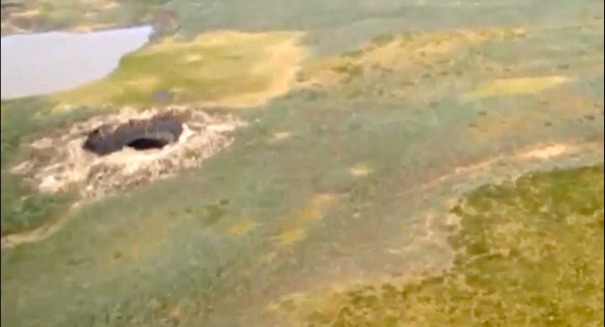
Scientists first began investigating the massive hold a few months ago when it was discovered in the remote Yamal region of Siberia.
A huge black hole opened up in Siberia not long ago, and after some preliminary investigations, researchers say they have seen more of them and that an urgent investigation is required.
A mysterious crater deep within the wilderness of Siberia attracted a team of scientists months ago to conduct a survey in northern Yamal where it was spotted, according to an NBC News report.
Using satellite images, scientists have estimated that about 20 water-filled “baby craters” surround the newly discovered craters, dubbed B2, according to the report.
The craters are near Siberia’s Bovanenkovo gas field, raising speculation that they formed due to gas emissions underneath the surface, and maybe even gas explosions. It could preclude an actual disaster, according to an official with the Moscow-based Oil and Gas Research Institute, making a more detailed investigation urgently necessary.
The holes could also be due to climate change, as Russian researchers last year found that there were higher methane emissions at the site, which could come from a thawing underground reservoir of natural gas. The holes may come from collapsing tunnels and caves.
Scientists expect to find more such holes in the area, and researchers are scouring satellite imagery to find more of them.
The initial hole is about 100 feet across, and up to 300 feet deep. Scientists already suspected natural processes that created lakes in the Yamal area could be to blame. One early theory was that a pocket of natural gas combiend with water, salt, and increasing temperatures to blast a hole through the surface and throw debris in all directions.
Siberia makes up 77 percent of Russia’s land area, and is home to some of the most remote stretched of land on the planet. It has been part of Russia since the 17th century.
Leave a Reply